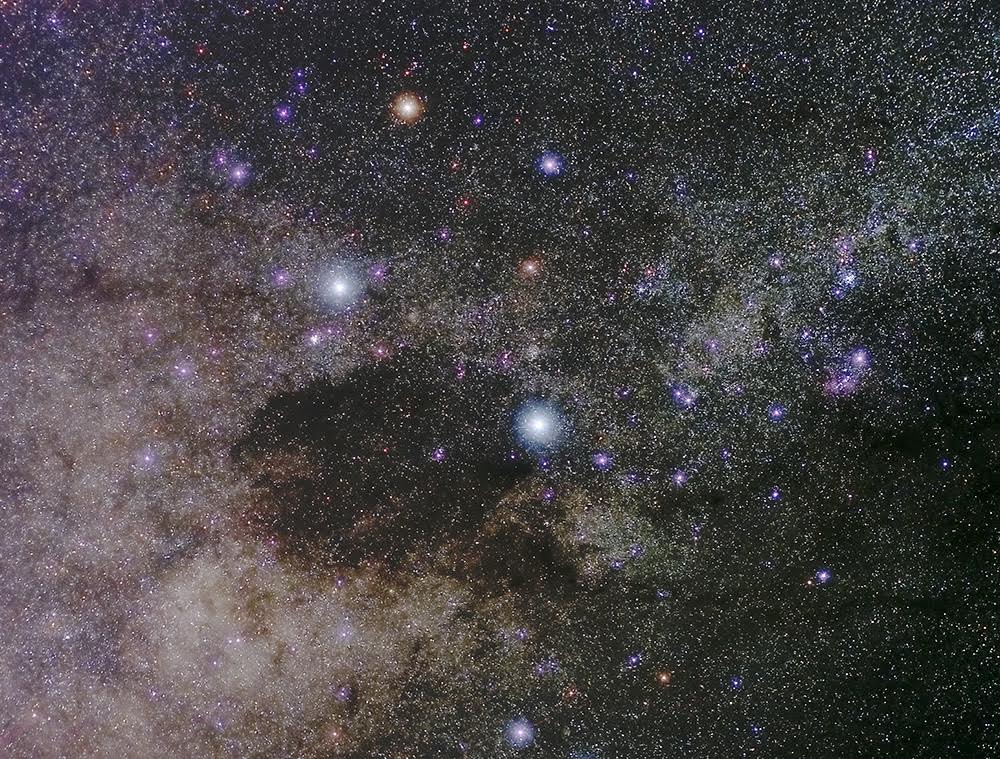
While not a constellation itself, the Summer Triangle dominates the overhead sky in the northern summer and autumn months and guides stargazers to other stars, constellations, and deep-sky sights. The vertices of the triangle are marked by three bright stars Vega, Deneb, and Altair, each of which belong to true constellations Lyra, Cygnus, and Aquila, respectively. The image below shows the Summer Triangle rising as seen from mid-northern latitudes at 10 p.m. in mid July. The triangle is big: it spans about two full hand widths held at arm’s length. The triangle can be seen well south of the equator, too, above the northern horizon. Southern stargazers call it the “Northern Triangle” or the “Winter Triangle” [Read more…] about Touring the Summer Triangle
Share This:


